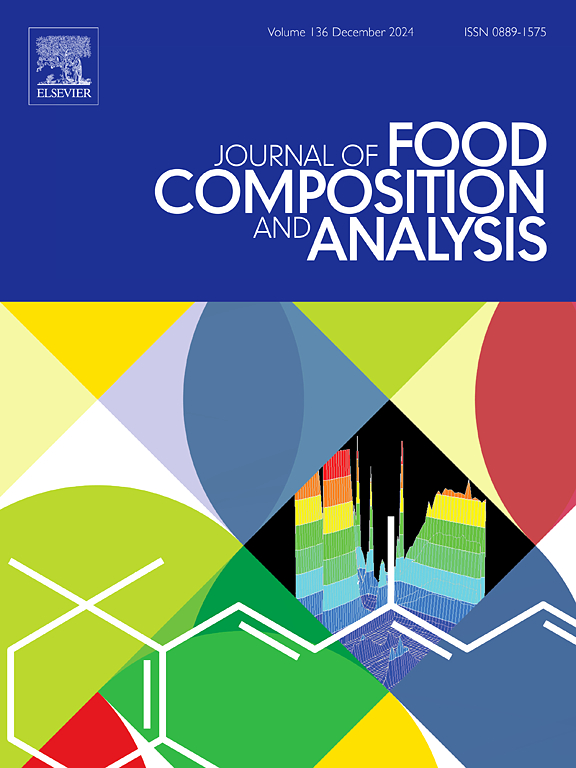Effect of different roasting time on the formation of free and bound heterocyclic aromatic amines in roasted beef
IF 4
2区 农林科学
Q2 CHEMISTRY, APPLIED
引用次数: 0
Abstract
This study examined how varying roasting times influenced the formation of free and bound heterocyclic aromatic amines (HAAs) in beef during the roasting process. The findings showed that as the roasting time increased, the water content and color decreased (P < 0.05), whereas glucose, creatine, and creatinine levels increased (P < 0.05) from 0.05 to 2.45, 2.68–4.96, and 0.07–0.91 mg/g, respectively. A total of 7 free HAAs (IQx, MeIQx, MeIQ, PhIP, 4,8-DiMeIQx, Harman, and Norharman) and 5 bound HAAs (MeIQx, AαC, 7,8-DiMeIQx, Harman, and Norharman) were detected in the roasted beef by high performance liquid chromatography-mass spectrometry (HPLC-MS/MS). The bound HAA content in the roasted beef was significantly higher than that of the free HAAs. As the roasting time increased, the bound HAAs increased from 2125.08 to 2326.45 ng/g, while the free HAAs increased from 45.72 to 121.38 ng/g (P < 0.05). Correlation analysis revealed that the development of free and bound HAAs was positively associated with glucose, creatine, and creatinine, and the FAAs were positively correlated with the formation of MeIQx through partial least squares regression (PLSR) analysis. These findings would help minimize the development of free and bound HAAs in roasted meat products.
求助全文
约1分钟内获得全文
求助全文
来源期刊

Journal of Food Composition and Analysis
工程技术-食品科技
CiteScore
6.20
自引率
11.60%
发文量
601
审稿时长
53 days
期刊介绍:
The Journal of Food Composition and Analysis publishes manuscripts on scientific aspects of data on the chemical composition of human foods, with particular emphasis on actual data on composition of foods; analytical methods; studies on the manipulation, storage, distribution and use of food composition data; and studies on the statistics, use and distribution of such data and data systems. The Journal''s basis is nutrient composition, with increasing emphasis on bioactive non-nutrient and anti-nutrient components. Papers must provide sufficient description of the food samples, analytical methods, quality control procedures and statistical treatments of the data to permit the end users of the food composition data to evaluate the appropriateness of such data in their projects.
The Journal does not publish papers on: microbiological compounds; sensory quality; aromatics/volatiles in food and wine; essential oils; organoleptic characteristics of food; physical properties; or clinical papers and pharmacology-related papers.
 求助内容:
求助内容: 应助结果提醒方式:
应助结果提醒方式:


